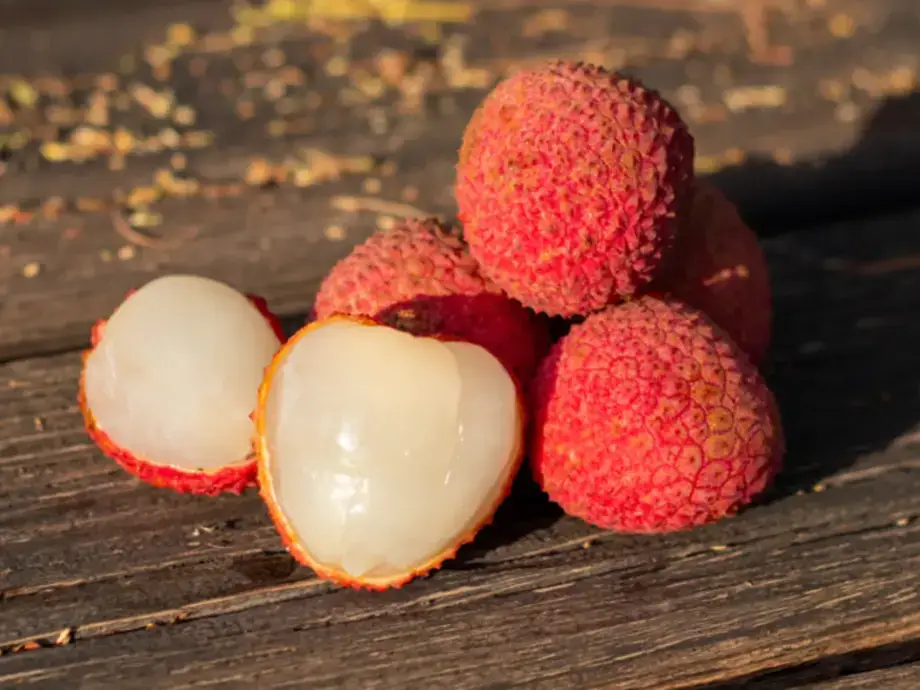The Sweet Migration: How Lychee Became a Mexican Staple
Every year, as China basks in the heat of summer, Mexico enters its rainiest season. Amid the showers, a surprising fruit appears on Mexican street corners and in bustling markets: the lychee. For many visitors, seeing this sweet, fleshy fruit in Mexico is unexpected. Yet, for countless Mexican families, lychee is a cherished seasonal treat, woven into the fabric of local life. The story of how lychee became a Mexican staple is one of migration, adaptation, and global trade—a tale that connects continents and cultures through a single, fragrant fruit.
- The Sweet Migration: How Lychee Became a Mexican Staple
- Historical Roots: Chinese Migration and the Introduction of Lychee
- Modern Cultivation: Mexico’s Lychee Industry Today
- Export Dynamics: From Mexican Orchards to North American Markets
- China’s Role: The Global Lychee Powerhouse
- Technological Innovations: Cold-Chain Logistics and Global Reach
- Cultural Connections: Lychee as a Symbol of Migration and Memory
- Market Trends: Packaging, Education, and Mainstream Appeal
- Challenges and Opportunities: The Future of Lychee Trade
- In Summary
Historical Roots: Chinese Migration and the Introduction of Lychee
The lychee’s journey to Mexico began in the late 19th century, during a period of significant Chinese migration. Hundreds of Chinese workers arrived in Mexico, many settling in Sinaloa on the northwest coast. According to local legend, these migrants brought lychee seeds from their homeland and gifted the first trees to Sinaloa’s governor. While some sources suggest lychee trees have grown in Mexico for over a millennium, the consensus is that widespread cultivation began with this wave of migration in the 1800s.
For decades, lychee trees grew quietly in private gardens and small orchards, a living reminder of distant roots. It wasn’t until the 1970s that commercial lychee farming took off in Mexico. This shift marked the beginning of lychee’s integration into Mexican agriculture and cuisine, as the fruit quickly found its way into local markets and homes.
Modern Cultivation: Mexico’s Lychee Industry Today
Today, lychee cultivation in Mexico spans 13 states, including Veracruz, Puebla, Oaxaca, and Sinaloa. The industry has grown steadily, with official data showing that Mexico produced more than 26,000 metric tons of lychee fruit in 2023. The majority of this harvest is exported to North America, particularly the United States, where demand continues to rise.
Lychee’s popularity in Mexico is not limited to its Chinese heritage. The fruit has become a beloved seasonal delicacy, enjoyed by families across the country. Liliana, a 37-year-old engineer from Veracruz, recalls, “They’ve always been a special treat in our home every year since my childhood.” This sentiment is echoed by many Mexicans, for whom lychee signals the arrival of summer and the promise of sweet, juicy refreshment.
Despite its success, the Mexican lychee industry faces challenges. The harvest season is short, typically lasting just a few weeks between May and July. Weather conditions, particularly the need for a few days of low temperatures to induce flowering, can significantly impact yields. Many of Mexico’s lychee trees are over a century old, and while they still produce well, expansion of new acreage is slower than industry leaders would like.
To meet growing demand and ensure quality, Mexican producers have adopted modern agricultural practices and food safety certifications. Packaging innovations, such as clamshell containers with QR codes and consumer information, are helping to make lychee more accessible and appealing to mainstream shoppers in the U.S. and beyond.
Export Dynamics: From Mexican Orchards to North American Markets
Mexico’s lychee exports are primarily destined for the United States, where the fruit commands premium prices. On U.S. grocery platforms, lychees are often described as a luxury item, with consumers eager to savor the short season. As one online reviewer noted, “Not as sweet as last year’s, but still the best I can find in the US market. The season is short, just a few weeks. It is worth savoring while it lasts.”
Initially, lychee sales in the U.S. were concentrated in Asian communities, where the fruit holds deep cultural significance. However, in recent years, lychee has gained mainstream popularity, appealing to a broader audience seeking exotic flavors and healthy snacks. This shift has been beneficial for Mexican growers, who now see increased demand and higher prices for their fruit.
Competition in the U.S. market is fierce, particularly from China, which ships lychees to the West Coast during the same season. Mexican producers differentiate themselves by working with select farmers to ensure high-quality fruit and by offering unique packaging and marketing strategies.
China’s Role: The Global Lychee Powerhouse
While Mexico has become a significant lychee producer, China remains the world’s leading source of the fruit. Southern China, especially Guangdong province, is renowned for its vast lychee orchards and diverse varieties. In 2020, Guangdong alone produced approximately 1.3 million tons of lychees, accounting for over half of China’s total output and about one-third of global production.
Maoming city in Guangdong is often called the “lychee basket of the world,” with a cultivation area of over 24,000 hectares and an annual output exceeding 200,000 tons. The region’s lychees are exported to markets across Asia, North America, Europe, and the Middle East. In 2025, Dianbai District in Maoming exported and processed over 2,600 tons of lychee, reaching destinations as far as Japan, Australia, Canada, and the UK.
China’s dominance in lychee production is matched by its leadership in export logistics. Cold-chain technology, including pre-cooling and freshness-locking methods, has revolutionized the global lychee trade. These innovations allow lychees from Guangdong to reach the Middle East and Europe within three days, preserving their delicate flavor and texture.
Technological Innovations: Cold-Chain Logistics and Global Reach
One of the key factors enabling the global spread of lychee is the development of advanced cold-chain logistics. Traditionally, lychees are highly perishable, with a short shelf life that limited their export potential. However, breakthroughs in preservation and transportation—many pioneered by Chinese companies and universities—have changed the game.
Cold-chain systems maintain a consistent, low temperature from the moment the fruit is harvested until it reaches the consumer. Pre-cooling removes field heat, while specialized packaging and rapid transport prevent spoilage. As a result, lychees can now be shipped from China to North America, Europe, and the Middle East in just a few days, arriving fresh and flavorful.
This technological leap has not only expanded the market for Chinese lychees but has also inspired improvements in other lychee-producing countries, including Mexico. The ability to deliver high-quality fruit to distant markets has increased profits for farmers and encouraged further investment in the industry.
Cultural Connections: Lychee as a Symbol of Migration and Memory
The story of lychee in Mexico is more than an agricultural success; it is a narrative of migration, adaptation, and cultural exchange. For Chinese immigrants and their descendants, lychee represents a tangible link to their heritage—a taste of home in a foreign land.
Zhang Tieliu, a member of the Chinese American Business Association, reflects on this connection:
“I was born and raised in Guangzhou, the capital of Guangdong province. I later moved across the ocean for work. The United States doesn’t grow lychees, but for Chinese living in North America, that taste of home is something we truly miss.”
For many, the sight of lychees in a Mexican or American supermarket is a moment of recognition, a thread connecting past and present, East and West. Even when the fruit’s size, sweetness, or texture differs from the varieties found in southern China, its presence evokes memories and fosters a sense of belonging.
In Latin America, lychee is considered a luxury fruit outside of Mexico. In Panama, it is known as “chirimoya china,” a nod to its Chinese origins and exotic flavor. Brazil, too, has embraced lychee, with thousands of hectares of orchards and ongoing expansion of cultivation areas.
Market Trends: Packaging, Education, and Mainstream Appeal
As lychee becomes more mainstream in North America, producers are adopting new strategies to attract and educate consumers. In Mexico, companies like Freshway Produce are introducing clamshell packaging with QR codes and detailed information about the fruit. These efforts aim to demystify lychee for first-time buyers, explaining how to peel and eat the fruit and highlighting its nutritional benefits.
Such marketing innovations are helping lychee move beyond specialty Asian markets and into the broader retail landscape. Demand is rising, but production remains relatively stable, constrained by the age of existing orchards and the slow pace of new plantings. Nevertheless, the industry is optimistic about future growth, driven by consumer curiosity and a growing appreciation for global flavors.
Challenges and Opportunities: The Future of Lychee Trade
Despite its successes, the global lychee industry faces several challenges. The fruit’s short season and sensitivity to weather make production unpredictable. In both China and Mexico, growers must contend with fluctuating yields and the threat of pests and diseases.
Export markets are also highly competitive. Chinese lychees dominate in terms of volume and variety, but face logistical hurdles and trade barriers in some countries. Mexican lychees, while prized for their proximity to the U.S. market, must differentiate themselves through quality and branding.
On the positive side, rising demand in North America and Europe presents significant opportunities. The adoption of cold-chain logistics and modern marketing techniques is helping to overcome traditional barriers and expand the reach of this ancient fruit. As more consumers discover lychee’s unique flavor and cultural significance, the industry is poised for continued growth.
In Summary
- Lychee was introduced to Mexico by Chinese migrants in the late 19th century, with commercial cultivation beginning in the 1970s.
- Today, Mexico produces over 26,000 metric tons of lychee annually, exporting most of it to North America, especially the United States.
- China remains the world’s leading lychee producer, with Guangdong province at the heart of global production and export.
- Technological advances in cold-chain logistics have enabled fresh lychees to reach distant markets quickly, preserving quality and expanding global trade.
- Lychee’s story in Mexico is a powerful symbol of migration, cultural exchange, and the enduring connections between communities across continents.
- Modern marketing, packaging, and consumer education are helping lychee gain mainstream appeal in North America and beyond.
- Despite challenges such as short harvest seasons and competition, the future of the lychee industry looks promising, driven by innovation and growing international demand.












